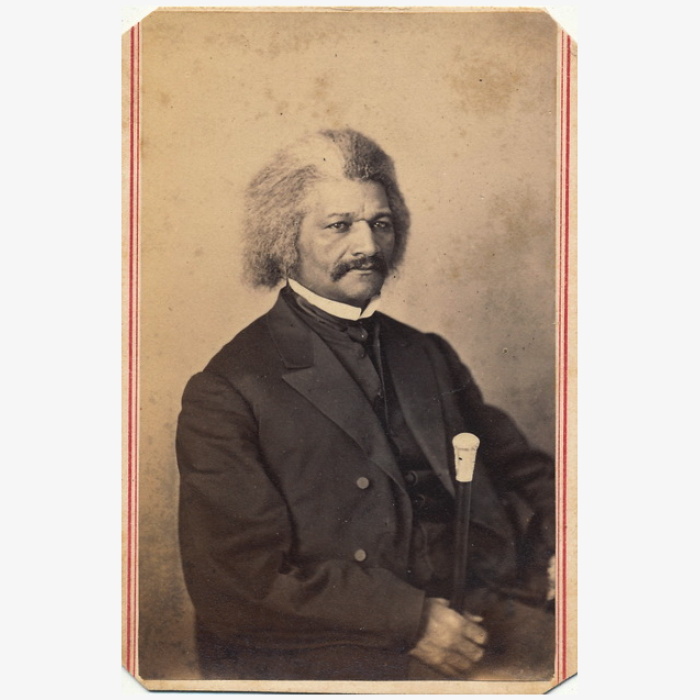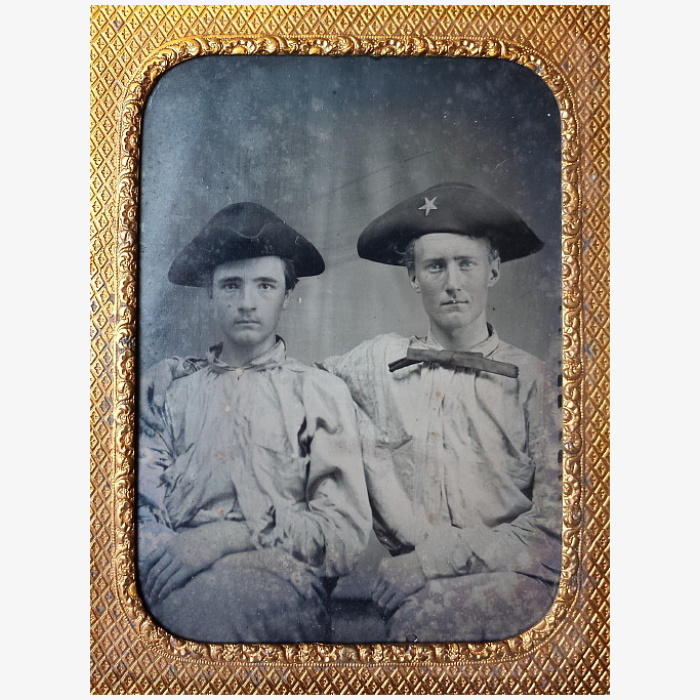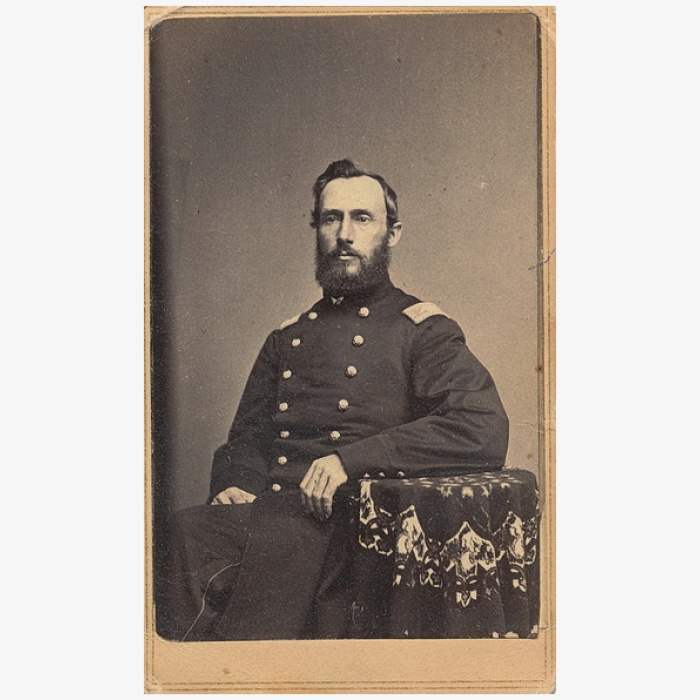Description
Outstanding and exceptionally rare sixth plate daguerreotype of West Point cadet and future United States officer and Confederate brigadier general, Laurence Simmons Baker. A North Carolina native, Baker would initially receive his schooling at the Norfolk Academy before being accepted to West Point. He would graduate from the academy in 1851, last in his class of 42 cadets. Following his graduation from the academy he would be given a commission serving as a 2nd lieutenant in the 3rd U.S. Cavalry (Mounted Rifles). Baker would eventually rise to the rank of captain, serving mainly on the frontier. As hostilities broke out between the North and the South, Baker would align with his home state of North Carolina despite his opposition to succession, resigning on May 10th. Before the ink on his resignation had even dried, Baker would be appointed lieutenant colonel of the 1st North Carolina Cavalry. With Robert Ransom serving as colonel and James B. Gordon serving as major, they would form one of the finest cavalry regiments in Confederate service. In the spring of 1862, following Ransom’s transfer to an infantry unit, Baker would be promoted to colonel of the regiment. The regiment would serve admirably under his guidance. First in assisting with stemming the advance of Burnside’s forces in North Carolina and then again helping Lee push back McClellan’s forces in front of Richmond. Baker would see further action throughout 1862 at the Seven Day’s Battle, Second Manassas, South Mountain, Sharpsburg, Williamsport, Fredericksburg and lastly Chancellorsville. The following year would see the regiment hotly engaged at Brandy Station where they received great praise for their action on the field. At Upperville, Baker himself would lead his men in the charge yelling “First North Carolina, Follow me!” as he repulsed the Union cavalrymen.
During the Gettysburg Campaign, Baker and the men of the 1st North Carolina would accompany Stuart on his raid around the Union Army. In the cavalry action of July 3rd, Baker would assume command of the brigade after the wounding of General Hampton. As the Army of Northern Virginia retreated back towards Virginia, Baker was given the task of covering the retreat. As Union cavalry advanced on Brandy Station, Baker and his men would put up stiff resistance. General Stuart, Baker’s superior would report to General Lee with great praise for Baker and his actions at Brandy Station. Lee would recommend Baker for a promotion that same day, giving him the rank of brigadier general. He would be assigned to take command of an exclusive force of North Carolina cavalry consisting of the 1st, 2nd, 3rd and 5th North Carolina Cavalry. Baker had however been severely wounded in the right arm during the fight at Brandy Station. Unfit for field command he would yield command to James Gordon.
Still incapacitated by his arm wound, he was assigned to command the Second North Carolina Military District headquartered in Goldsboro beginning in June, 1864. In this new en-devour he was tasked with protecting the Weldon Railroad, a major lifeline for the Confederacy, from roaming Union forces. In doing so he was wounded again on September 22nd. Baker would return to command in time to see action in front of Sherman’s Army near Savannah before being recalled back to North Carolina to take command of the First Brigade of North Carolina Junior Reserves. A brigade made up entirely of boys under the age of 18. In March 1865, Baker would make a last desperate effort to stop Sherman’s advance into North Carolina during the Battle of Bentonville. After learning of Lee’s surrender at Appomattox and Johnston’s surrender on April 26th, Baker surrendered his command. He would be paroled on May 8th at Raleigh and return to civilian life.
This exceptionally rare view shows Laurence during his time at West Point. The aspiring officer would have been close to 19 years of age at the time of this sitting. Photographed in his undress uniform with a row of cadet eagle buttons running down the front. A stiff white, paper neck stock is worn along with a cravat. Photographed by New York photographer J. E. Carpenter. Carpenter would open for business in 1850 and by the end of 1851 he had closed up shop. The same year which Baker would graduate from West Point. Accompanying this image is Baker’s signed West Point manual “Summary of the Course of Permanent Fortifications”. Signed in period ink inside the front cover “Lt. Lau S. Baker U.S.A.”, dating it’s field use to his time serving as a lieutenant with the 3rd U.S. Cavalry. The book itself is missing the spine but both the front and back cover are present as are all pages. The daguerreotype itself has been heavily researched and studied by renowned facial identification specialist, Herbert Buckley of New York who specializes in physiognomical facial nomenclature. This is the same facial identification process used by the FBI and other similar organizations to identify subjects by recognizing corresponding facial features and facial structures. The image is accompanied by significant documentation from Mr. Buckley in which he compared the image with other known views of Baker, concluding with absolute certainty the identification. The dag itself has been professionally re-sealed with demonstrates a slight amount of oxidation around the mat edge. Otherwise a beautiful image absent of blemishes. It does come housed in the original and full leatherette case as well. Extremely rare view of one of the Confederacy’s leading and highly respected cavalry officers!




